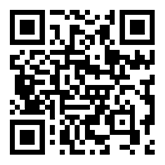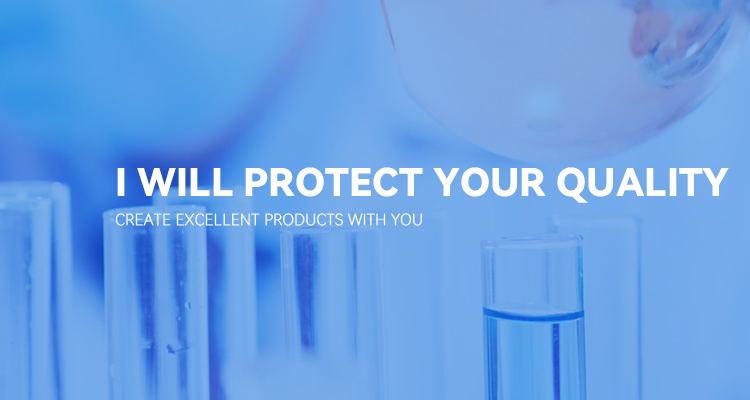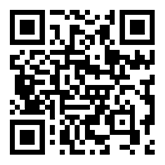Introduction to ped certification of pressure equipment
The EU pressure equipment directive was updated from 97/23/ec to 2014/68/eu, and the new directive will be enforced from July 19, 2016. 2014/68/eu Pressure Equipment Directive (hereinafter referred to as ped directive) is the directive for pressure equipment in many EU directives, which stipulates the basic safety requirements (ESRs) for pressure equipment and maintains the current safety level of pressure equipment in the EU. It is applicable to the design, manufacture and qualification evaluation of pressure equipment and complete sets of equipment with a maximum working pressure greater than 0.5bar.
The specific update date is as follows:
June 27, 2014: release;
From July 17, 2014 to February 28, 2015: Article 13 transition period;
From February 28, 2015 to June 1, 2015, Article 9 of the old directive and Article 13 of the new directive can be used at the same time;
June 1, 2015: Article 9 of the old directive was cancelled and Article 13 of the new directive was used;
2016/7/19: cancel 97/23/ec and implement 2014/68/ec.
Authentication mode change:
97/23/EC | 2014/68/EU |
A1: Internal production control with monitoring of final assessment | A2: Internal production control plus supervised product checks at random intervals |
B1: EC design examination | B: Design type |
B: EC type examination | B: Production type |
C1: Monitoring of final assessment | C2: Conformity to EU type based on internal production control plus supervised product check at random intervals. |
Remark:
1. Changing from A1 mode to A2 mode increases the requirements of random inspection of certification bodies. The certification body can sample and test in any production process.
2. In the old directive, B and B1 are form inspection and design review respectively, and in the new directive, the two are unified into one B.
3. Changing C1 to C2 also increases the supervision power of the certification authority. |
1. Basic safety requirements (according to Appendix I of PED directive)
Appendix 1 of PED directive is the basic safety requirements, which mainly includes:
Design (e.g. strength, reliability);
Processing (e.g. processing of components);
Inspection (e.g. pressure test, acceptance);
Mark / acceptance mark (manufacturer's acceptance mark);
Operation guide;
Materials: Materials conforming to European harmonized standards, materials with European material approval (EMA), materials with special evaluation (PMA)
Binding basic requirements:
The manufacturer shall, in accordance with the requirements of ped, conduct a responsible hazard analysis at the beginning of design, so as to find out the hazard of the pressure device under pressure. For this reason, it is necessary to prevent the danger caused by mechanical failure of components or container shells, as well as the resulting media overflow. Therefore, hazard analysis is the basis of component design.
Safety should be considered first in the design of pressure devices, especially when the manufacturer anticipates or specifies the operating conditions in advance. The following are the issues that should be considered:
Reduction or elimination of hazards (overall structural design, material selection, processing);
Application of protective measures (mainly safety devices) when the danger cannot be removed;
Explanation of operation in residual hazards (described in the operation guide);
The standards adopted must comply with the following requirements:
- tested standards;
- European material license or
- regulations on expert appraisal permission.
Ped directive gives the minimum requirements for materials, such as corresponding performance and toughness indicators. The higher value range of the necessary test pressure in the regulations for finding pressure vessels is:
- 1.43 times the maximum allowable pressure at room temperature;
- 1.25 times of the maximum load of the component at the design temperature.
2. Risk classification of pressure equipment according to Appendix II of PED directive
According to the provisions of Appendix II of ped, pressure equipment can be divided into four conformity assessment levels: I, II, III and IV. Pressure equipment with low risk can be operated according to sound engineering practice.
In order to realize the classification of pressure equipment, manufacturers need to know the following knowledge.
1) Equipment type
Pressure vessel
Steam boiler
The Conduit
2) Fluid state: gas or liquid. At the maximum operating temperature of the equipment, if the saturated vapor pressure (gauge pressure) of the fluid does not exceed 0.5bar, it shall be regarded as a liquid, otherwise it shall be regarded as a gas.
3) Fluid population
Group 1 - hazardous fluids: flammable, explosive, toxic, and highly oxidizing
Group 2 - non hazardous fluids: fluids other than group 1 include steam
4) Maximum allowable pressure PS and volume v/ nominal size DN of equipment
5) Maximum operating temperature of equipment TS
According to the above information, the manufacturer can determine the relevant classification chart in Appendix II of ped with reference to the basis for risk classification, and then mark the coordinate points in the selected classification chart according to the maximum allowable pressure PS and volume v/ nominal size DN of the equipment, so as to determine the category of pressure equipment.
Pressure containing accessories can be classified according to pressure vessels or pressure pipelines, and the relevant one is selected. When both volume and nominal size are considered relevant, the category of pressure containing accessories shall be the highest one.
Safety accessories are generally classified as class IV, but as a special column, the safety accessories of some special equipment can adopt the same category as the equipment they protect.
Basis of risk classification
设备类型 | 流体状态 | 流体族群 | 附录II图表 |
压力容器 | 气态 | 族群1 | 表1 |
族群2 | 表2 |
液态 | 族群1 | 表3 |
族群2 | 表4 |
蒸汽锅炉 |
|
| 表5 |
压力管道 | 气态 | 族群1 | 表6 |
族群2 | 表7 |
液态 | 族群1 | 表8 |
族群2 | 表9 |
3.Conformity assessment method according to Annex III of PED directive
Selection of evaluation mode for class I-IV equipment:
风险等级 | 批量生产 | 单件生产 |
常规检验 | 质量保证 | 常规检验 | 质量保证 |
I | A | A | A | A |
II | A1 | D1或E1 | A1 | D1或E1 |
III | B+C1 | B+E或H | B1+F | B1+D或H |
IV | B+F | B+D或H1 | G | H1 |
1)Mode a: internal production control
This mode requires the manufacturer to prepare technical documents, including: general description of pressure bearing equipment, design drawings, strength calculation, list of adopted standards, inspection results, test reports, etc. The manufacturer marks CE on each pressure equipment and puts forward a written declaration of conformity. This mode does not require the authorized body to perform the review.
2)Mode A1: internal manufacturing inspection with final qualification supervision
In addition to the requirements of mode a, the manufacturer shall carry out the final evaluation (final inspection and pressure test), and the authorized institution shall carry out irregular supervision and random inspection on the pressure equipment being manufactured or completed. In addition to the CE mark and the declaration of conformity, the responsibility of the authorized institution shall be reflected, and the identification number of the authorized institution shall be marked on each pressure equipment.
3) Mode B: EC type approval
The representative samples produced by the manufacturer shall be certified by the authorized agency to meet the requirements of the directive.
In addition to the requirements of mode a, the content of manufacturing process is added. The authorized agency will review and verify the certificates issued by the material manufacturer for materials that do not meet the European harmonized standards or European approvals; Approve the permanent connection (welding) process; Verify that welding and NDT personnel have been qualified and approved as required; At the same time, verify that the sample manufacturing conforms to the provisions of the technical documents. The authorized authority will issue the EC type approval certificate, which is valid for 10 years.
4) Mode B1: EC design approval
The design of a pressure equipment product shall be certified by an authorized institution to meet the requirements of the directive. Except that it is not necessary to verify that the samples comply with the provisions of the technical documents, the review items of the authorized institution are the same as mode B. The authorized agency will issue the EC design approval certificate, which is valid for 10 years.
5) Mode C1: type compliance
The manufacturer guarantees that the pressure equipment conforms to the type described in the EC type approval certificate and meets the requirements of the directive. The authorized institution shall conduct irregular supervision and random inspection on the pressure equipment being manufactured or completed, mark the CE mark and the identification number of the authorized institution on each product, and issue a written declaration of conformity.
6) Mode d: production quality assurance
The manufacturer shall carry out production, final inspection and test according to the approved quality system to ensure that the pressure equipment conforms to the type described in the EC type approval certificate or EC design approval certificate and meets the requirements of the directive.
The authorized institution will review the quality system to determine whether it meets the requirements, and must conduct regular audits and complete a comprehensive review every three years. The authorized agency will also carry out irregular supervision and inspection on the manufacturer to verify the normal operation of the quality system. Each product will be marked with CE mark, the identification number of the authorized agency, and a written declaration of conformity will be issued.
7) Mode D1: production quality assurance
Prepare technical documents according to mode a. The manufacturer shall carry out production, final inspection and test according to the approved quality system to ensure that the pressure equipment meets the requirements of the instruction. The rest are the same as mode D.
8) Mode e: product quality assurance
The manufacturer shall carry out the final inspection and test according to the approved quality system to ensure that the pressure equipment conforms to the type described in the EC type approval certificate and meets the requirements of the directive. The rest are the same as mode D.
9) Mode E1: product quality assurance
Prepare technical documents according to mode a. The manufacturer shall carry out the final inspection and test according to the approved quality system (ISO9003) to ensure that the pressure equipment meets the requirements of the directive. The rest are the same as mode D.
10) Mode F: Product Validation
The manufacturer guarantees that the pressure equipment meets the requirements of EC type approval certificate or EC design approval certificate and directive.
The authorized agency shall inspect and test each product to verify that its type conforms to and meets the requirements of the directive. Focus on verifying that welding personnel and NDT personnel have been qualified and approved as required; Certificate issued by the material manufacturer; Final inspection and verification test (pressure test) of products and inspection of safety devices. Each product shall be marked with CE mark and the identification number of the authorized institution, and a written declaration of conformity shall be issued. The certificate of conformity of products issued by the authorized institution.
11) Mode g: single machine verification
Manufacturer compiles technology according to mode a












